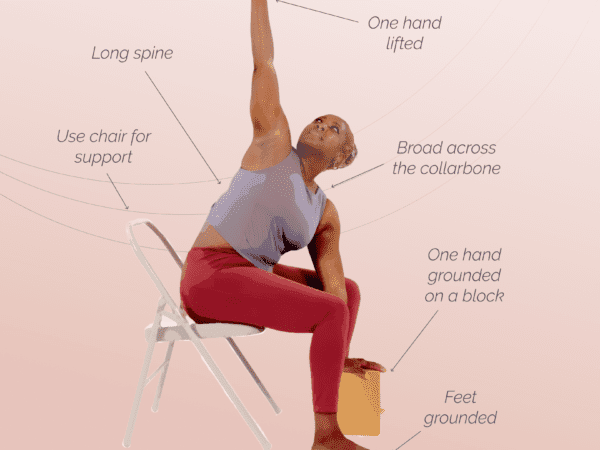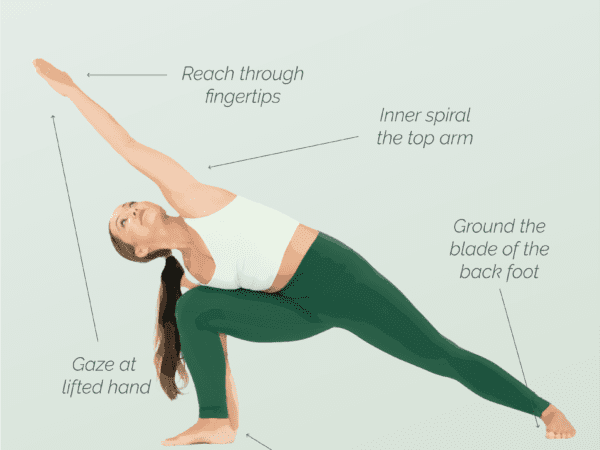Raja bhujangasana or king cobra pose is a challenging backbend that comes at the end of the Ashtanga Third Series. You need to ensure you warm up before attempting it and have the strength and flexibility necessary for the posture. Before we look at how to do the pose let’s take a look at the benefits and contraindications for the pose.
Benefits of raja bhujangasana
This pose offers numerous benefits for the body, mind, and overall well-being. Some of the benefits of practicing raja bhujangasana include:
Spinal Flexibility: Raja bhujangasana provides a deep stretch to the spine, improving its flexibility and increasing its range of motion. It helps alleviate stiffness and discomfort in the back, neck, and shoulders.
Strengthened Core: This pose engages the abdominal muscles, toning and strengthening the core. It can help improve posture and stability.
Improved Digestion: The compression on the abdominal area in Raja Bhujangasana stimulates the digestive organs, enhancing digestion and relieving issues like constipation.
Enhanced Lung Capacity: As the chest expands and the ribcage opens in this pose, it promotes deep breathing and increases lung capacity. It is beneficial for respiratory conditions like asthma and bronchitis.
Opening of the Heart Chakra: Raja bhujangasana is associated with the heart chakra, Anahata. Opening and expanding the chest in this pose can help release emotional blockages, promote self-love, and foster a sense of compassion.
Toning of the Arms: This pose strengthens and tones the arms, particularly the muscles in the upper arms and shoulders.
Increased Blood Circulation: The backbend in raja bhujangasana stimulates blood flow throughout the body, improving circulation and delivering fresh oxygen and nutrients to the cells.
Stress Relief: Practicing this pose can help reduce stress and anxiety. Deep breathing, combined with physical stretching, calms the nervous system and promotes relaxation.
Boosted Energy and Vitality: Raja bhujangasana activates the energy centers in the body, revitalizing the system and increasing overall energy levels.
Improved Confidence: The regal and majestic posture of raja bhujangasana helps build confidence and inner strength. It promotes a sense of empowerment and self-assuredness.
Contraindications of raja bhujagasana
While Raja Bhujangasana can offer several benefits, there are certain contraindications and precautions to consider before practicing this pose. It’s important to be aware of these to avoid any potential risks or discomfort. Here are some contraindications for raja bhujangasana:
Pregnancy: Avoid practicing Raja Bhujangasana during pregnancy, especially during the second and third trimesters. It puts pressure on the abdomen and may not be suitable for the changing body.
Back or Neck Injuries: Individuals with chronic or acute back or neck injuries, such as herniated discs, should avoid this pose or modify it with the guidance of a qualified yoga teacher. Excessive extension in the spine can worsen existing conditions.
Carpal Tunnel Syndrome: If you have carpal tunnel syndrome or wrist pain, be cautious while practicing raja bhujangasana as it involves bearing weight on the hands and wrists. You can modify the pose or choose alternative variations.
Recent Abdominal Surgery: If you have undergone abdominal surgery recently, it is best to avoid this pose until you have fully recovered. The pressure on the abdomen in raja bhujangasana can strain the healing tissues.
High Blood Pressure: If you have uncontrolled high blood pressure, it is advisable to avoid deep backbends like raja bhujangasana. These poses can elevate blood pressure levels further and may not be suitable for individuals with hypertension.
Migraines or Headaches: Some individuals may experience increased pressure in the head or aggravation of migraines or headaches during backbends. If you are prone to such conditions, approach raja bhujangasana cautiously or avoid it altogether.
Always listen to your body and practice yoga mindfully. If you have any concerns or specific health conditions, it’s recommended to consult with a healthcare professional or a qualified yoga instructor who can provide personalized guidance and modifications tailored to your needs.
How to do raja bhujangasana
Now that we clearly understand the benefits and contraindications for the pose, let’s look at how to do it.
From upward facing dog plant your pelvis on the ground. Lift your spine up out of the pelvis. Think of this like a cobra pose. Your spine is lifting up out of the pelvis. Find space between the vertebrae and use your back muscles to support your spine.
Come up onto your fingerprint tips and drop your head back.
Curl your toes under and press into your toes. When you feel your back has reached its maximum amount of bend, bring your palms down on the mat and let your knees bend.
Don’t force your knees to bend. It’s important that you don’t squeeze the legs.
Inhale and lift the spine. Exhale and lean back until your head makes contact with your feet.
Once you can touch your feet with your head, you can go deeper by tucking the feet behind the head.
The key with this posture is not to squeeze your legs but to let your back do the work.
Never force. Never squeeze your joints. Use your breath to find space in your back and effortlessly move into this backbend.
Watch the video from Kino for more details about safely doing raja bhujangasana.
By Omstars









